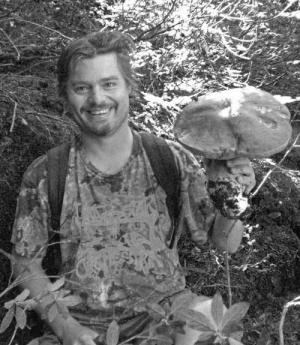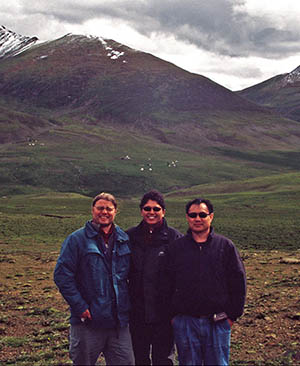Below I am posting an interview that was published in China Daily, the English language newspaper published by the government of the People's Republic of China. Over four months passed between interview and publication. Speculations regarding the strange title China Daily chose can be found at the end of this blog.
"Threats stem from lack of statistics, over-harvesting" China Daily 2012-12-17 First Person | Daniel Winkler China Daily Editor's note: Daniel Winkler, a German ecologist, has researched caterpillar fungus and its economic effects on China for 15 years. A study he conducted in 2005 with Losang Dradul [= Luorong Zhandui] of the China Tibetology Research Center motivated authorities in the Tibet Autonomous Region to introduce a licensing system for fungus harvesting and to keep track of the yearly output. [Not correctly reported: there were already licenses on county level in TAR and data was also collected, but aftersubmission of Luorong's report the first TAR-wide Cordyceps regulation was passed and a conference convened to improve management.]
Over-harvesting and poor statistical tracking of caterpillar fungus are major challenges for the sustainable management of the medicinal resource. Many rural Tibetans rely on this fungus for their incomes, and if anything happens to it, they will face big problems. Collectors should realize old, low-value caterpillar fungus is better off left in the ground to spread spores for the next year. But at the moment, hundreds of thousands of people are going into the mountains to collect as much as they can. They can’t find everything, but not much is left, and if the situation remains unchecked, the resource will be depleted sooner or later. Authorities should shorten the harvest season and further limit the number of collectors - for example, only two members should come from each household. If these restrictions are to work, the key is education. Officials need to work with community leaders to raise awareness to protect the resource so they can benefit for many years to come. I visited Tibetan communities with collection rights in Yushu prefecture, Qinghai province, with representatives from the China branch of the World Wildlife Fund for Nature. I showed images to villagers to explain the fruiting stages of caterpillar fungus and the different market values. It only took a few minutes to convince them that the mushroom needs spores to reproduce, contrary to local belief that it just grows by itself every year. Policymakers should regulate the market to put people off old, low-value caterpillar fungus, which shrinks substantially after it's dried. Then collectors will have the incentive to give up collecting it. The price rose by 900 percent between 1998 and 2008, when it then dropped 20 percent due to the financial crisis. The rise in price over the past four years is not as high as before, but harvests have fluctuated, as abundant production depends on sufficient rain and snowfall. There are several research institutes in China devoted to genetic studies and artificial cultivation of caterpillar fungus [but these institutes have NOT succeeded in cultivating caterpillar fungus], which is good news for Tibetan collectors who face serious competition and a price collapse. However, more resources should be used to find out how to manage the collection of a natural product in a sustainable way, rather than learn how to cultivate artificial ones. Daniel Winkler was talking to Li Yao and Daqiong. [I have never talked to Daqiong]
Daniel Winkler's past publishing notes: I never talked to Daqiong, and if he would have been present at the interview in Beijing I am convinced the story would not have had the title they cooked up, since my complain of lack of statistics was aimed at Qinghai Province, the biggest producer of caterpillar fungus as well as the Tibetan areas in Sichuan, Yunnan and Gansu that also lack government efforts to keep track of the most precious product of this region. Now the title is apparently in juxtaposition to a lengthy article published on the same day in China Daily, to which Daqiong probably contributed substantially. Interestingly the very informative article is full of statistics, never published before. To me the choice of header for my interview in juxtaposition to the TAR caterpillar fungus article seems to try to leave the impression that I was clueless in regard of the statistics kept in TAR. However, in 2008 and 2011 I had published previous years of some of these statistics and my complain regarding lack of statistics was not aimed at TAR, but the other Cordyceps producing areas outside of TAR. However Li Yao did not inform me that China Daily was publishing a second Cordyceps paper on the same day. |
Ecologist holding a porcini mushroom in 2007.
|


